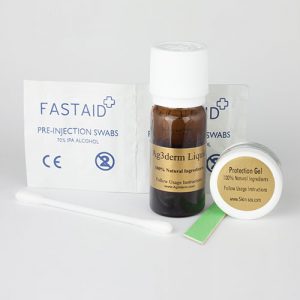Keratosis is a skin problem that is caused by over exposure of the skin to sun rays under little or no protection. When the skin is exposed to excessive sunlight, keratinocytes cells are over produced. Keratinocytes are cells responsible for the production of keratin on the skin. The over produced keratinocytes leads to a skin problem known as keratosis. It look like uneven bumps on the skin and is commonly seen at the back, on the upper arms, thighs and all other parts of the body where there is no hair. It is prevalent among people of adolescent age. Keratosis can vary from minor to major bumps on the body. Different types of Keratosis removal methods are available for people who desire to get rid of it.
The appearance of keratosis on the skin is unappealing and it usually shows up in groups of small bumps that may not be itchy or painful. People who have keratosis on their skins always go through it throughout the year, but the effect can increase when the climate gets cold and moisture level drops. At that time the mumps becomes noticeable in size and color. Keratosis removal is necessary to reduce and remove the lumps from the surface of the skin.
Keratosis are of different types; seborrheic keratosis, keratosis pilaris, keratosis alba and so many others. Some of the keratosis are malignant (can be painful and dangerous to health with excessive growth) and some are benign (of little size, no pain and constitutes no danger to health). Keratosis removal can be carried out to reduce the risk to people’s health or to enhance their look. Keratosis removal can wiped out the effect totally from the skin by using home and naturally made products and also by consulting dermatologists.
Keratosis removal can be done by making softer the deep vascular inner layer of the skin to reduce the pores that are blocked. The treatment starts by paying attention to every day routine that will not aggravate the lesion. The first thing to do is to apply a gentle cleansing agent known as scrub (made from sugar, almond oil, honey and lemon oil). This is done to purify and unlock the pores of the inner layers of the skin. People whose skins are dried after cleansing should take lukewarm shower and use a moisturizer. This is especially necessary during the cold season when there is low moisture and so the skin dries quickly.
Keratosis removal can also be carried out by the use of Cryotherapy. The process involves using liquid nitrogen to freeze the lump on the skin. This method does not work for all lesions. It is most suitable for thin lesions.
Other method of keratosis removal includes surgical excision and lasers. Due to the sensitive nature of the skin, patients who desire to undergo any keratosis removal method should consult their dermatologists for proper prescription.
 Recent Keratosis Articles:
Recent Keratosis Articles:
Remove Keratosis
How To Remove Keratosis

